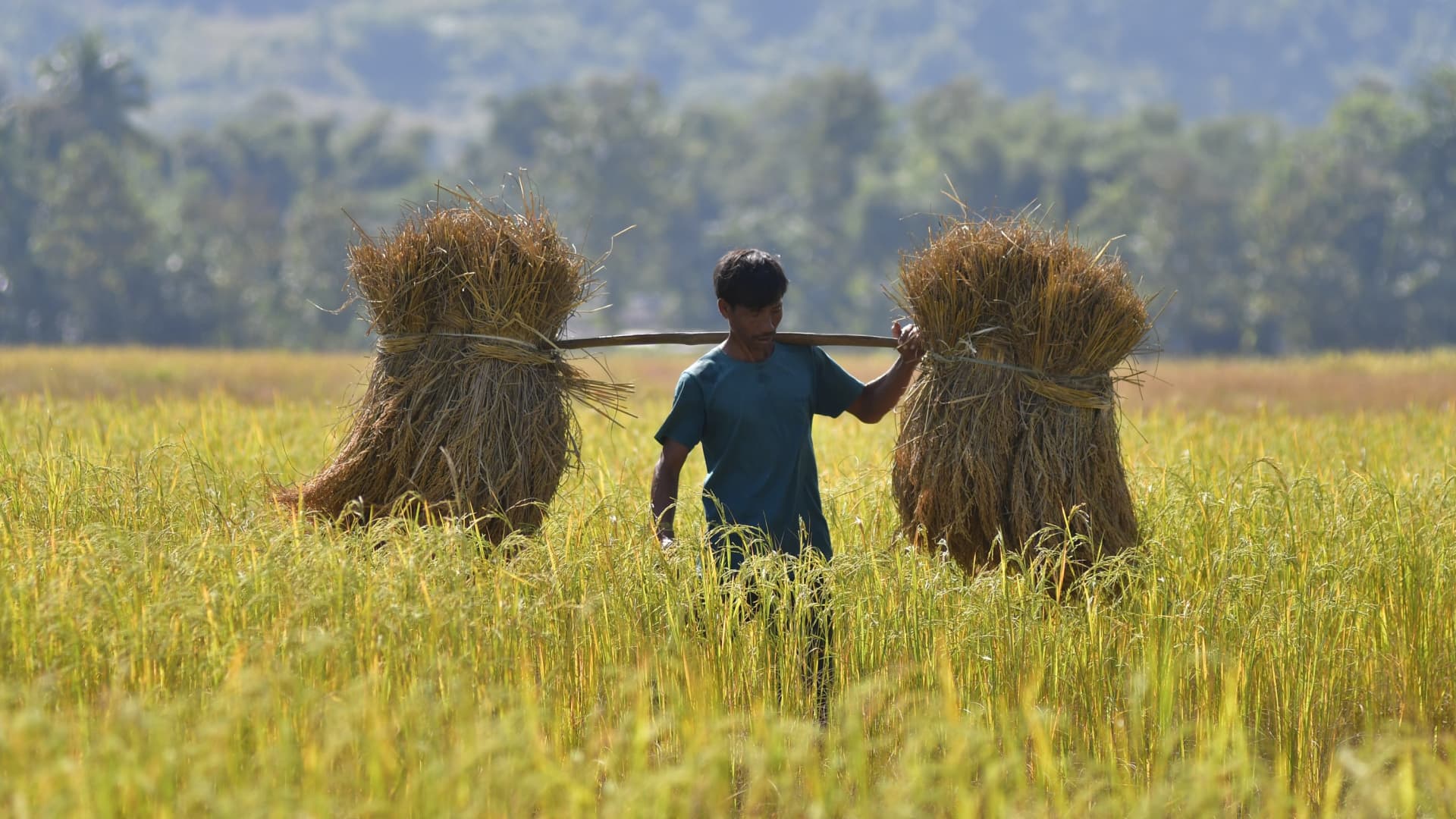
Rice trader displays variety of rice samples at a wholesale store, in Guwahati, Assam, India on August 2, 2023.
Nurphoto | Nurphoto | Getty Images
Rice prices surged to their highest in almost 12 years on the back of India’s rice export ban and adverse weather conditions that could impact production, said the United Nations’ food agency.
The Food and Agriculture Organization All Rice Price Index for July rose by 2.8% to 129.7 points.
The figure is up 19.7% compared to a year ago, and the highest nominal value since September 2011, data from FAO showed. The sharpest increases in price came from Thailand.
“Concerns over the potential impacts of El Nino on production in some suppliers provided further underpinning to prices, as did rain-induced interruptions and quality variability in Vietnam’s ongoing summer-autumn harvest,” the report stated.
El Nino is a climate phenomenon marked by extreme temperatures and weather conditions that could interrupt lives and livelihoods.
India, the world’s leading rice exporter, banned exports of non-basmati white rice on Jul. 20, as the government seeks to keep a cap on soaring food prices at home, and ensure there are enough supplies domestically “at reasonable prices.”
The country accounts for more than 40% of the global rice trade. Even if it affects a portion of India’s overall rice shipments, FAO noted that India’s export restriction “raises substantial food security concerns for a large swathe of the world population.”
Rice prices are hovering at decade highs, with rough rice futures were last trading at $16.02 per hundredweight (cwt).
And these prices could climb higher.
“We will most probably see a higher FAO rice price index for August 2023 vs July 2023,” Oscar Tjakra, senior analyst at global food and agriculture bank Rabobank, told CNBC.
He added that India’s non-basmati white rice export ban came at a time of seasonal low inventories in major global suppliers of rice, especially those in Asia.
A farmer in a paddy field in Assam, India.
Xinhua News Agency | Xinhua News Agency | Getty Images
Prices could surge further if other countries follow suit in implementing export restrictions.
“The prices can go even much higher if importing countries try to stockpile rice for domestic food security, and exporting countries put export restrictions,” said Samarendu Mohanty, Asian regional director at International Potato Center.
El Nino could further exacerbate risks on global production in other major Asian rice producers such as Thailand, Pakistan and Vietnam.
“For the next few months, global rice prices’ direction will be determined by the impact of El Nino,” Tjakra said in an email.
Rice, being a vulnerable crop, has the highest probability of simultaneous crop loss during an El Nino event, a scientific study showed.
To make matters worse, Thailand, the world’s second largest exporter of rice, is now encouraging its farmers to plant less of the crop in a bid to save water as a result of low rainfall.
